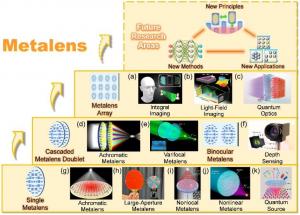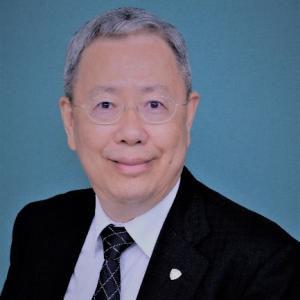As a leading metasurface technology, metalenses have brought new energy to the development of compact optical systems.
CHENGDU, SICHUAN, CHINA, August 22, 2025 /EINPresswire.com/ — Overcoming the limits between operational bandwidth, aperture size, and numerical aperture, while expanding their potential in advanced applications, has been a main focus of research. At the same time, with growing demand for better light control, metalenses are gradually moving toward system-level designs. If a single metalens is like a skilled solo player performing in specific situations, then a group of metalenses working together is like a well-practiced orchestra, able to achieve more complex and flexible control of light. In this context, recent progress in metalens technology follows two main paths: one is the ongoing improvement and expanded functions of single metalenses; the other is the continuous development and new applications of multi-metalens systems.
The research group of Prof. Din Ping Tsai from City University of Hong Kong was invited to publish a review article titled “Progress in Metalenses: From Single to Array” in the first issue of Opto-Electronic Technology in 2025. The article provides a structured overview of recent developments in metalenses, with a focus on the gradual transition from single-device optimization to system-level integration based on increasing structural complexity.
The article first reviews the long-standing challenges in metalens research, such as broadening the achromatic bandwidth and increasing the aperture size, and highlights representative studies and key breakthroughs in these areas. In addition, the authors summarize recent progress at the intersection of metalenses and emerging optical concepts. This includes narrowband focusing designs based on nonlocal resonances, the extension of functional operation into the infrared and ultraviolet regimes using nonlinear materials, and explorations aimed at improving the efficiency and controllability of quantum light sources.
The article then focuses on dual-metalens systems, which are categorized into vertically stacked and laterally aligned configurations based on their spatial arrangement. The former enables more flexible aberration control and allows varifocal systems. The latter mimics the human visual mechanism, with binocular metalens demonstrating strong application potential in intelligent depth sensing.
As a more complex system configuration, metalens arrays offer high-dimensional light-field modulation and parallel imaging capabilities. This section of the review discusses three representative applications: integral imaging for three-dimensional reconstruction, light-field imaging for precision measurement, and quantum light sources capable of generating high-dimensional and multi-photon entangled states.
The review provides a systematic overview of research progress on both single metalenses and multi-metalens systems, summarizing recent advancements in functional enhancement and system integration. The authors also offer a few tentative considerations regarding future progress, including the exploration of new modulation mechanisms, AI-assisted design approaches, and the development of diversified array architectures.
About the Research Group:
Chang Peng, Ph.D. student in the Department of Electrical Engineering at City University of Hong Kong. Her research interests focus on multifunctional metasurface devices and their applications in optical computing and intelligent optical systems.
Prof. Jin Yao, Research Assistant Professor in the Department of Electrical Engineering at City University of Hong Kong. He received his Ph.D. in Engineering from the Institute of Electromagnetic Acoustics, Xiamen University, in 2021. From September 2021 to April 2024, he worked as a postdoctoral researcher at City University of Hong Kong. His research interests include nonlocal metasurface devices and their applications in light field manipulation, imaging, and nonlinear optics. He has published over 20 papers as first or corresponding author in journals including Nature Communications, Science Advances, Light: Science & Applications, and others. He is the principal investigator of one Hong Kong GRF project and serves as a reviewer for journals including Science Advances, Advanced Functional Materials, and Nano Letters.
Prof. Din Ping Tsai, Chair Professor in the Department of Electrical Engineering at City University of Hong Kong. He is a Fellow of the Chinese Optical Society (COS), the Institute of Electrical and Electronics Engineers (IEEE), the International Society for Optics and Photonics (SPIE), the Optical Society of America (OSA), the American Physical Society (APS), the American Association for the Advancement of Science (AAAS), the Electromagnetic Academy (EMA), the Japan Society of Applied Physics (JSAP), the Physical Society of Taiwan (PST), the Asia-Pacific Artificial Intelligence Association (AAIA), the Hong Kong Academy of Engineering (HKAE), the National Academy of Inventors (NAI) in the USA, the International Academy of Engineering (IAE) in Russia, and the Asia-Pacific Academy of Materials (APAM).
Read the full article here: https://www.oejournal.org/oet/article/doi/10.29026/oet.2025.250004
Andrew Smith
Charlesworth
+44 7753 374162
marketing@charlesworth-group.com
Visit us on social media:
LinkedIn
YouTube
Other
Legal Disclaimer:
EIN Presswire provides this news content “as is” without warranty of any kind. We do not accept any responsibility or liability
for the accuracy, content, images, videos, licenses, completeness, legality, or reliability of the information contained in this
article. If you have any complaints or copyright issues related to this article, kindly contact the author above.
![]()


